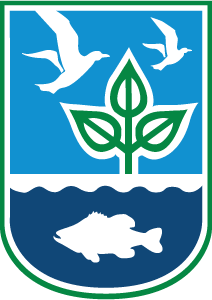RMP Program Elements
Eligibility Requirements for Programs 1, 2, and 3:
For sources with regulated substances at or above the threshold quantities listed under 40 CFR Part 68.130, the requirements for compliance with 112(r) are classified according to the following three Program levels. A source may have different processes eligible for different Program levels, and will need to satisfy the requirements for only that level with all relevant information on each process included in a single RMP.
Program 1: A covered process is eligible for Program 1 if it satisfies all the following:
Processes which would not affect the public in the case of a worst-case release (in the language of Part 68, processes “with no public receptors within the distance to an endpoint from a worst-case release”) and with no accidents with specific offsite consequences within the past five years are eligible for Program 1, which imposes limited hazard assessment requirements and minimal prevention and emergency response requirements.
Program 2:
Processes not eligible for Program 1 or subject to Program 3 are placed in Program 2, which imposes streamlined prevention program requirements, as well as additional hazard assessment, management, and emergency response requirements.
Program 3: The process is eligible for Program 3 if it meets the following conditions:
Processes not eligible for Program 1 and either subject to OSHA's PSM standard under federal or state OSHA programs or classified in one of ten specified North American Industrial Classification System (NAICS) codes are placed in Program 3, which imposes OSHA’s PSM standard as the prevention program as well as additional hazard assessment, management, and emergency response requirements.
NOTE: If you assign a process to Program 2 or 3 when it might qualify for Program 1, the implementing agency may enforce all the requirements of the higher program levels. If, however, you are already in compliance with the prevention elements of Program 2 or Program 3, you may want to assign it to Program 2 or 3 to inform the community of your prevention efforts.
PROGRAM LEVEL REQUIREMENTS
|
Program 1 |
Program 2 |
Program 3 |
|---|---|---|
|
Hazard Assessment |
Hazard Assessment |
Hazard Assessment |
|
5-year Accident History |
5-year Accident History |
5-year Accident History |
|
Management Program |
Management Program |
Management Program |
|
Prevention Program: Certify no additional steps needed |
Prevention Program: Safety Review |
Prevention Program: Safety Review |
|
Emergency Response Plan: Coordinate with local responders |
Emergency Response Plan: Develop plan and program and coordinate with local responders |
Emergency Response Plan: Develop plan and program and coordinate with local responders |
|
RMP Contents: Executive summary |
RMP Contents: Executive summary |
RMP Contents: Executive summary |
Submit One Risk Management Plan for All Covered Processes
